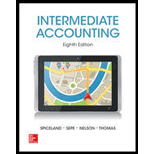
a. Current Assets: Current assets are the assets which can be easily converted into cash or consumed within one year. These assets are used in carrying out daily operations of a business.
b. Investments: Companies invest in stocks and bonds of other companies or governmental entity to deploy their excess fund, and/or for a specific business strategy.
c. Property, Plant and Equipment: Property, plant and equipment are the fixed tangible assets which are used for more than one year and are used for production purposes.
d. Intangible Assets: Intangible assets are fixed assets which do not have physical existence and generates a worth for the organization which is determined during acquisition or merger.
e. Other assets: Other assets are a separate group of assets listed in a balance sheet which are not suitable in the main asset categories.
f. Current liability: Current liability is an obligation that the companies need to pay from the remaining current assets or creation of other current liabilities within a fiscal year or the operating cycle whichever is higher.
g. Long-term liabilities: Long-term liabilities are obligations that the company needs to pay after at least one year or more. Long term liabilities are otherwise called as long-term debt.
h. Paid-in-capital: Paid in capital is the amount received from investors during the issue or sale of shares. It comprises of fund received from the sale of stock and not through the proceeds from ongoing operations.
i.
To Classify: The balance sheet items in the appropriate category.
Want to see the full answer?
Check out a sample textbook solution
Chapter 3 Solutions
INTERMEDIATE ACCOUNTING WITH AIR FRANCE-KLM 2013 ANNUAL REPORT
- Can you explain this general accounting question using accurate calculation methods?arrow_forwardPlease provide the correct answer to this general accounting problem using accurate calculations.arrow_forwardI am looking for help with this general accounting question using proper accounting standards.arrow_forward
- I am searching for the correct answer to this general accounting problem with proper accounting rules.arrow_forwardChapter Six Mini Practice Set Saved Help 30 1 points eBook Print 이 References ALLOUMILITY WUIN UI LIIS CUSUTY SERVICES FOR MEN January 2002. Assume that you are the chief accountant for Eli's Consulting Services. During January, the business will use the same types of records and procedures that you learned about in Chapters 1 through 6. The chart of accounts for Eli's Consulting Services has been expanded to include a few new accounts. Follow the instructions on the Requirements tab to complete the accounting records for the month of January. DATE TRANSACTIONS January 2 Purchased supplies for $14,000; issued Check 1015. January 2 Purchased a one-year insurance policy for $16,800. January 7 Sold services for $30,000 in cash and $20,000 on credit during the first week of January. January 12 Collected a total of $8,000 on account from credit customers during the first week of January. January 12 Issued Check 1017 for $7,200 to pay for special promotional advertising to new businesses on…arrow_forwardCan you solve this general accounting problem with appropriate steps and explanations?arrow_forward

 AccountingAccountingISBN:9781337272094Author:WARREN, Carl S., Reeve, James M., Duchac, Jonathan E.Publisher:Cengage Learning,
AccountingAccountingISBN:9781337272094Author:WARREN, Carl S., Reeve, James M., Duchac, Jonathan E.Publisher:Cengage Learning, Accounting Information SystemsAccountingISBN:9781337619202Author:Hall, James A.Publisher:Cengage Learning,
Accounting Information SystemsAccountingISBN:9781337619202Author:Hall, James A.Publisher:Cengage Learning, Horngren's Cost Accounting: A Managerial Emphasis...AccountingISBN:9780134475585Author:Srikant M. Datar, Madhav V. RajanPublisher:PEARSON
Horngren's Cost Accounting: A Managerial Emphasis...AccountingISBN:9780134475585Author:Srikant M. Datar, Madhav V. RajanPublisher:PEARSON Intermediate AccountingAccountingISBN:9781259722660Author:J. David Spiceland, Mark W. Nelson, Wayne M ThomasPublisher:McGraw-Hill Education
Intermediate AccountingAccountingISBN:9781259722660Author:J. David Spiceland, Mark W. Nelson, Wayne M ThomasPublisher:McGraw-Hill Education Financial and Managerial AccountingAccountingISBN:9781259726705Author:John J Wild, Ken W. Shaw, Barbara Chiappetta Fundamental Accounting PrinciplesPublisher:McGraw-Hill Education
Financial and Managerial AccountingAccountingISBN:9781259726705Author:John J Wild, Ken W. Shaw, Barbara Chiappetta Fundamental Accounting PrinciplesPublisher:McGraw-Hill Education





